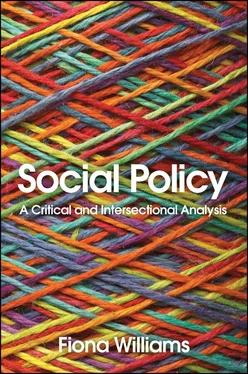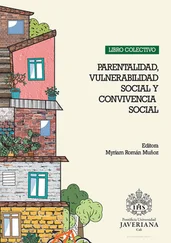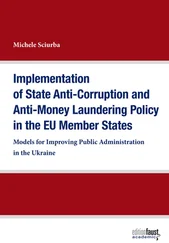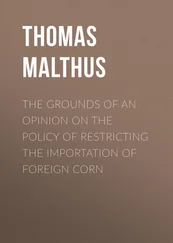The implications of these and other analyses in the book for teachers, researchers, students and scholar activists are taken up in chapter 8as a conclusion. I summarize the theoretical approaches in the book and then look at social policy as a field of study in terms of, first, reconstituting its knowledge base with an emphasis on decolonizing the discipline; second, developing relational knowledge and practices; and, third, applying collective reimagination and dedication to the reconstruction of social policy in the aftermath of the Covid-19 crisis.
Appendix Iprovides an elaboration of the analytical frame of family–nation–work–nature and its relation to welfare. Appendix IIlinks future to past by situating the author in a history of social policy over the past fifty-five years.
1 1. ‘Prefigurative’ politics means practising in the here and now that which is demanded for the future: for example, setting up alternative services which meet the needs of women in which policies and practices are deliberated by women service-users.
2 2. They are here described differently from Williams (2016).
PART I ORIENTATION
2A Critical and Intersectional Approach to Social Policy
Introduction
In the previous chapter I introduced two ideas. First, that, while there have been major analytical insights on welfare states from many of the feminist, anti-racist, political economy, disability, age, sexuality, and ecology-related critiques of social policy, the core of social policy has been slow or differentially selective in acknowledging them. Second, that, while many of these critiques offer profound analyses, they remain relatively disparate; what is important is to draw together their commonalities, strengths and insights in a way that respects their specificities and argues for their central significance in the discipline of social policy. This chapter elaborates both these ideas, setting out the places different critiques have occupied in relation to mainstream social policy and looking at the combination of political and intellectual forces that have shaped their continuing marginality. In the second half I examine the origins and re-emergence of intersectionality as theory, method and praxis, looking at its potential and pitfalls. I argue that, if combined with some of the key concepts from critical approaches to social policy, it has much to offer in pulling together the disparateness of different critical approaches and in thinking through issues of a transformative perspective on social policy. In sum, I offer an intersectionally informed and multi-focal critical approach. The subsequent chapters apply this in different ways.
Remarginalization of the social
There are a several reasons as to why many of the issues raised by the earlier and subsequent critiques around gender, race, disability, sexuality and age were sidelined or only partly accommodated in mainstream social policy. First, it is important to understand the breadth of these critiques’ new frames of analysis of the post-war welfare state. Feminist critiques were to highlight the relationship between the public sphere of work and politics and the private sphere of family and personal relationships. Within that was an examination of the gendered assumptions attached to care, dependency and patriarchal power, as well as the exclusions attached to non-heteronormative identities, subjectivities and relationships. Care and dependency were also critically re-examined from the viewpoints of disabled people, children and older people, challenging bureaucratic and expert dominance over service-users and attempting to prefigure new democratic and participatory ways of doing welfare. In addition, the links between anti-colonial struggles and anti-racism brought the colonial and postcolonial global context of an international division of labour and geo-political inequalities to the fore. This went well beyond the limitations of the hermetically sealed single-nation view of the welfare state. It uncovered a critical understanding of the role of welfare states in nation-building and especially in the rubric of social imperialism in forms of early collectivism of the twentieth century. This sought to subordinate class and gender interests to those of nation and empire and did so by representing social reforms as the fruits of imperialism, which in their turn required national efficiency and healthy workers, mothers and children. This critique made connections between the increasingly significant political economy of migrant labour and the welfare state, especially the role of migrant labour in reducing social expenditure costs and the use of welfare institutions to police immigration. It found connections between the management of the colonies and the pathologization of the cultures and practices of people, especially mothers and their families, who migrated from those previous colonies. Together these critiques called for a more systematic approach to the study of social policy as the dynamic outcome not only of political and economic forces but of multiple social and cultural forces too. 1
The first set of barriers to their accommodation came from within the study of social policy itself. In a paradoxical twist by the 1990s, at the very point when many of the earlier feminist and anti-racist critiques began to gain greater foothold in the discipline of social policy, not only did the rise of neoliberalism in many countries attempt to dismantle the foundations which made the quest for greater social justice possible, but also the core of the discipline of social policy moved into cross-national comparative study. As it did so, it shed some of these new insights garnered through the previous two decades. The new studies in comparative social policy were influenced particularly by the work of Esping-Andersen’s The Three Worlds of Welfare Capitalism (1990). This was a major step forward in framing subsequent studies of the variations across different welfare regimes through their impact upon systems of social stratification, employment, and labour markets. It established important theoretical advances in providing a grounded quantitative analysis of welfare regime variations; it centred contestation; and it gave welfare states a significant role in shaping social formations. However, these contestations, histories and social formations focused centrally upon class and ignored gender, race or any other form of significant social division in the origins and development of nation welfare states.
Nevertheless, welfare regime analysis provoked feminist critiques of its marginalization of gender and led to new and inventive analyses of the gendered nature of welfare states. So, for example, Jane Lewis showed how the historical separation of the public and private (domestic) spheres was embedded in a male breadwinner model of welfare in different ways and to different extents in different countries, resulting in different ‘gendered welfare regimes’. This focused on the central issue that welfare regime analysis ignored: how far the unpaid labour of women in the family is recognized and valued (Lewis 1992). Other studies sought new concepts to measure that which was missing in mainstream analysis. For example, ‘the capacity to form an autonomous household’ indicates the extent to which the state frees women from the necessity to enter marriage, or equivalent partnership, in order to secure financial support for them or their children (Orloff 1993; and see Sainsbury 1994 for a redefinition of the gendered logics of welfare). They illustrated how significant contestations around the body and reproductive rights had in many countries wrought important reforms (O’Connor et al. 1999). Shaver’s critique noted the need to make room for the institutional complexity of welfare states – that there are no necessary patterns of coherence, unity or linearity in gender policy logics across and within welfare institutions (Shaver 1990). Together, this work provided much richer explanatory power for post-war welfare and overlapped with new feminist critiques of Marshall’s concept of citizenship which was central to welfare regime analysis (Pateman 1989; Lister [1997] 2003). It provided a sound basis to analyse the shift, starting at that time in many developed welfare states, from a ‘male-breadwinner’ model to a more ‘dual-earner’ or ‘adult-worker’ model in which women and men were expected to be earners (Daly 2011). A greater convergence was emerging from different models to reconcile work and care, while, at the same time, different policy goals, policy instruments and historical conditions were beginning to shape variations across countries (Platenga and Remery 2005; Lister et al. 2007; Lewis et al. 2008; Williams 2010; Williams and Brennan 2012; and see chapters 3and 6).
Читать дальше












